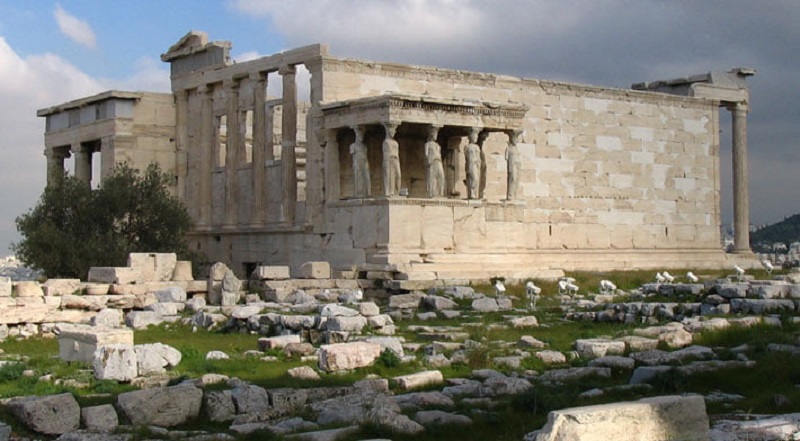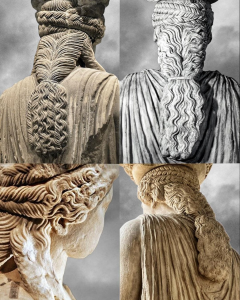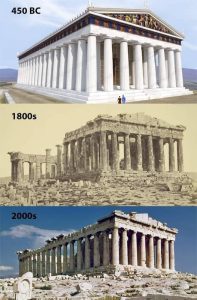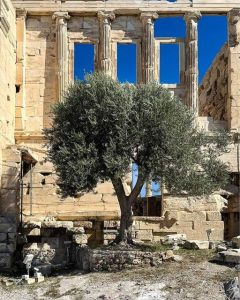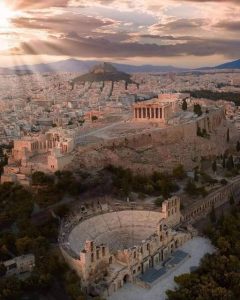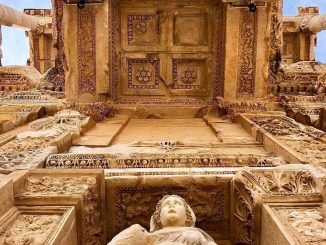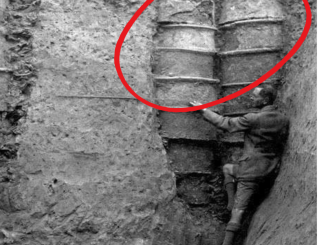Standing gracefully against the backdrop of modern Athens, the Caryatids—statuesque maidens of stone—support the southern porch of the Erechtheion on the Acropolis of Athens. These iconic figures, more than mere architectural elements, are enduring symbols of classical beauty and ingenuity.
Historical and Architectural Significance
The Erechtheion, located on the sacred rock of the Acropolis, was constructed between 421 and 406 BCE. It is unique among the ancient Greek temples for its asymmetrical design, tailored to accommodate the uneven ground and to respect the sacred sites it covers, including the supposed marks of Poseidon’s trident and the burial place of Athens’ mythical king, Cecrops.
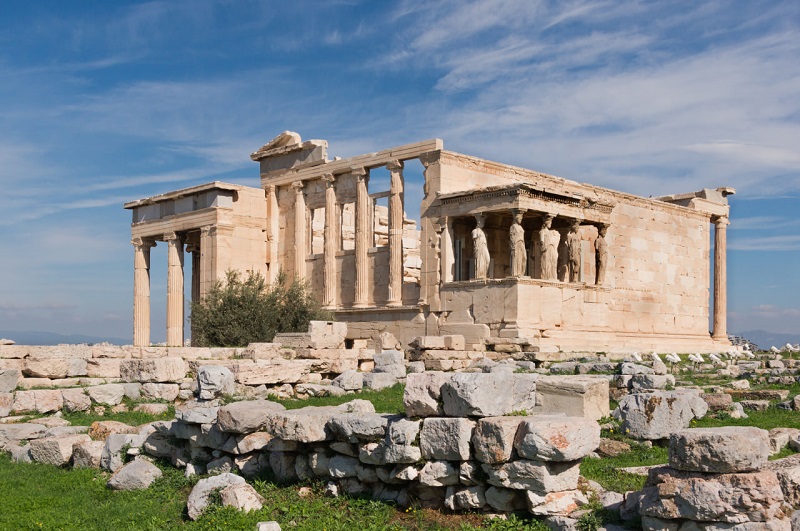
The Caryatids, or the maidens of Karyai, are a defining feature of the structure. They are six in number, each sculpted in a poised stance, bearing the weight of the temple’s roof on their elegantly carved heads. The figures are crafted with such detailed drapery and dignified posture that they appear both robust in their support role and delicate in their execution.
Artistry and Craftsmanship
Each Caryatid is unique, with subtle differences in drapery and posture that create a sense of individuality among the figures. The craftsmanship speaks volumes about the skill of their creator, who managed to infuse the stone with a sense of softness and fluidity. The carvings epitomize the high Classical style of sculpture, showcasing the Greeks’ mastery of depicting the human form in a way that is both idealized and remarkably lifelike.
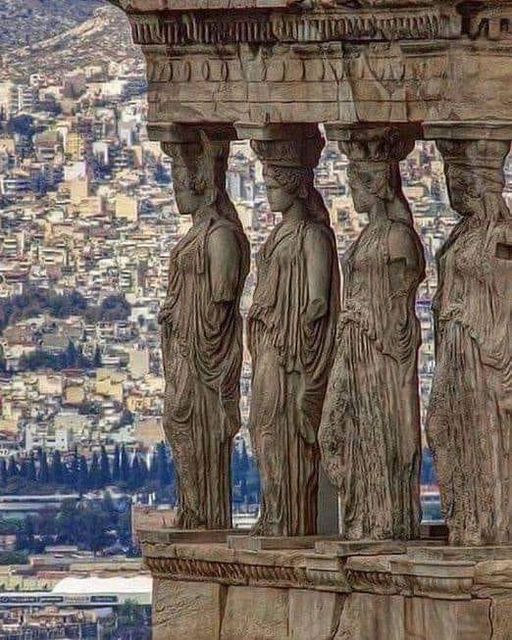
Preservation and Legacy
The Caryatids seen today at the Erechtheion are replicas; the original statues have been moved to the Acropolis Museum to protect them from environmental damage, with one held in the British Museum. The preservation efforts reflect the importance of these artifacts in global cultural heritage and their susceptibility to the ravages of time and pollution.
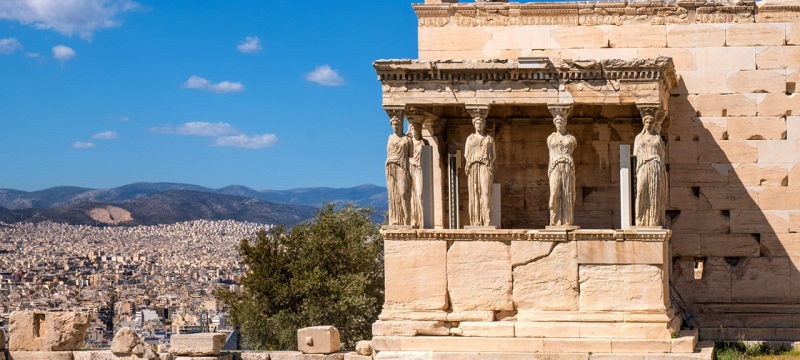
Modern Athens Through Ancient Eyes
The contrast between the ancient Caryatids and the sprawling modern cityscape of Athens serves as a poignant reminder of the city’s deep historical layers. This juxtaposition underscores not only the endurance of ancient Greek architectural ideals but also the continuing relevance of this heritage in shaping the aesthetic and cultural identity of Athens.
The Caryatids of the Erechtheion stand as a testament to the artistic and architectural achievements of ancient Greece. As they gaze out over the modern city from their lofty perch on the Acropolis, they bridge the past with the present, reminding us of the enduring legacy of the classical world and its continued influence on the world today. Their silent vigil over Athens embodies the spirit of a civilization that, though distant in time, still deeply resonates with us.
